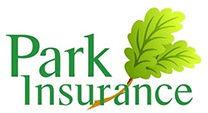For horsebox owners there are many safety factors to consider not just to protect the animals which you transport, but also yourself and other road users. If you’ve just bought your first horsebox then you may be feeling a little bewildered and unsure of what safety considerations you need to consider, while even old hands may need to brush up. To help you stay safe and get to grips with your horsebox, here we present some of the most important safety considerations for horsebox owners, with a little help from Her Majesty’s Government.
The Vehicle & Operator Services Agency has very helpfully produced a lengthy document entitled ‘A Guide for horse box and trailer owners’. The publication was produced in association with a number of key organisations of the horse world, including The British Horse Society, British Dressage, The Pony Club and the British Equestrian Federation. To save you time, we’ve distilled some of the key issues regarding horsebox safety into a handy checklist.
Driving hours and rests
If you’re driving a horsebox in conjunction with your business or on behalf of a business, you’ll need to adhere to the EU Drivers’ Hours rules. These rules include:
- A daily maximum driving time of nine hours
- A break of at least 45 minutes after driving for 4.5 hours
- A weekly maximum driving limit of 56 hours
- A weekly rest period of at least 45 hours
If your use of a horsebox is for leisure purposes only and is not connected to business activities, you do not need to adhere to these driving limits. But it is still important to bear in mind the effect that long driving hours and insufficient rest can have on your ability to drive and to react adequately. To avoid putting yourself, your horses or others at risk, ensure that you take regular breaks during long journeys.
Licensing and certificates
To safely drive a horsebox you need to have the necessary skills and training, and that generally corresponds to licensing requirements.
If you’re vehicle exceeds 3.5 tonnes gross weight (or 1.5 tonnes on its own) and you’re transporting horses commercially then you may need a goods vehicle operator licence. This is to ensure the proper, safe transportation of livestock, and will apply even if you’re only using your horsebox for hire or reward for just a day.
You also need to ensure that you have necessary driving license for the vehicle you’re driving. If your vehicle has a gross vehicle weight of 3.5 tonnes or less then an ordinary category B driving license for cars will be sufficient. If your vehicle is between 3.5 tonnes and 7.5 tonnes gross weight then you’ll need a C1 or a C class license. Above 7.5 tonnes it has to be a C class license.
Maintenance and testing
As the VOSA document points out, “Many horseboxes are only used occasionally,, so users need to be extremely vigilant to basic vehicle maintenance.” This will help not only to prevent accidents, but also to avoid unnecessary breakdowns and to extend the lifespan of your horsebox. VOSA recommends having the vehicle checked and serviced frequently by a qualified mechanic, rather than waiting till the MOT is due.
Safety checks
There are also basic safety checks that anyone can carry out in a matter of minutes. Particularly if you haven’t driven your horsebox for a while, you should check the following before setting off:
- Exterior lights and dashboard illumination
- Presence of reflectors
- Wheel nuts and horsebox tyre pressures
- Handbrake and footbrake
- Suspension
Vehicle weights
Adhering to restrictions on horsebox weights is not just a legal requirement, its good common sense. Check the maximum gross weight of your vehicle and ensure that you don’t load beyond this. Doing so could help prevent an accident and expensive insurance claim or worse.
